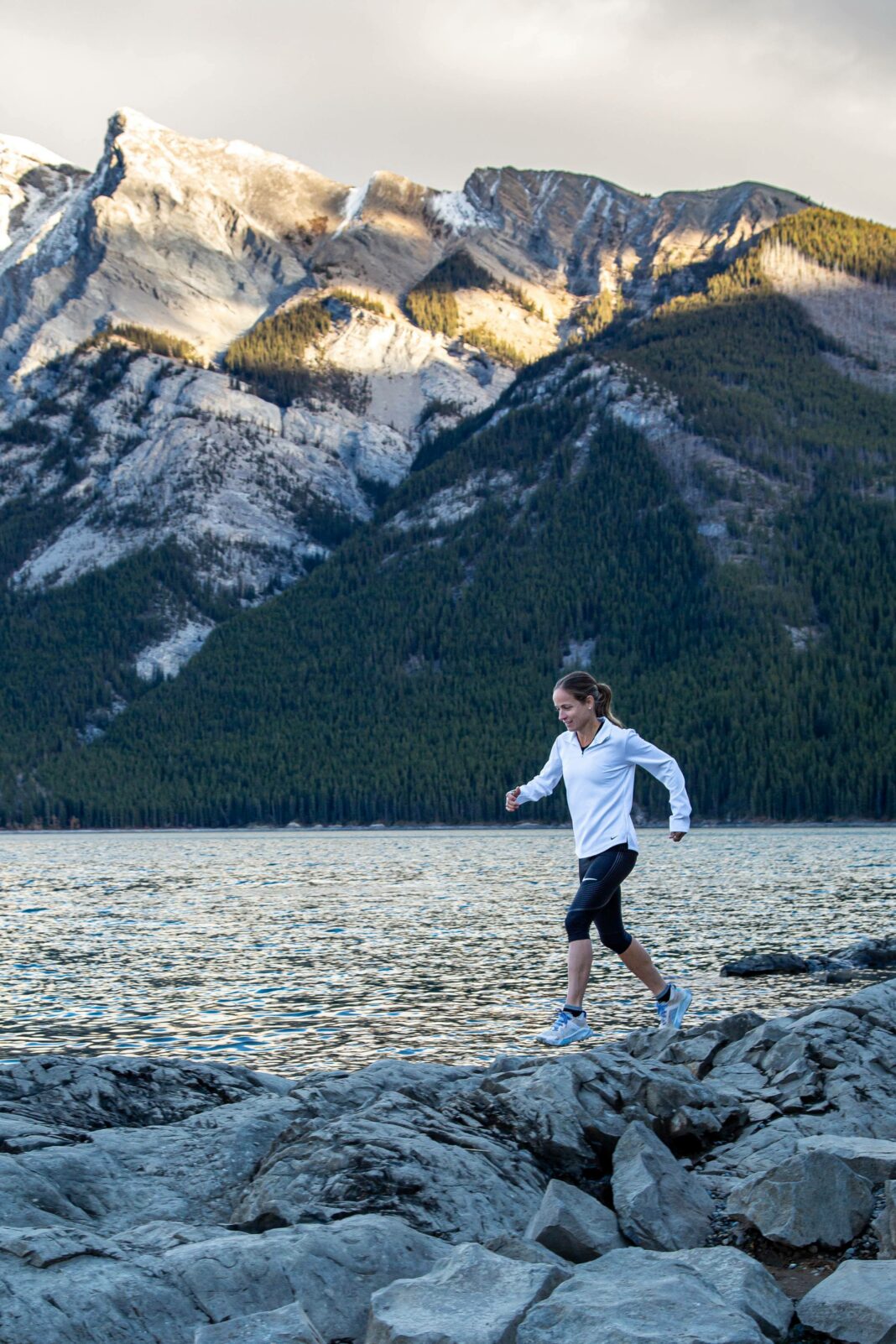Striving for peak running performance in your training regimen can feel like a guessing game, especially when relying solely on standard metrics like pace and heart rate. But what happens when you throw in the variables of trails, undulating terrain, steep climbs, and technical descents? Suddenly, optimizing your training becomes even more complex. Try these three running workouts to discover essential strategies for enhancing threshold training, tailored specifically for the dynamic environment of the trails.
A Key Training Component – Threshold Training
Threshold training is a key piece to all sound training plans. Threshold training is designed to increase aerobic capacity and allows you to sustain efforts without the breakdown. One of the more subtle benefits of threshold training is that it can promote gains while minimizing risk of overtraining.
Your aerobic threshold is roughly the effort that you could sustain for about an hour. For some people, this is about a 10 km effort. For the fastest distance runners in the world, it’s closer to road half-marathon effort.
Modification for Trail Runners
Even when transitioning from roads to trails, threshold training is still a key component of training. However, measuring threshold through pacing isn’t practical. Heart rate measurements can be unreliable and misleading when you add unpredictable terrain. “Rate of Perceived Exertion” or “RPE” is a reliable alternative to pace and heart rate. RPE is a way of measuring effort on a scale of 1-10 where one is “complete rest” and 10 is maximal effort. Moderate effort and threshold effort should be 7/10 for a 60-minute trial. This effort is cumulative, so if the terrain is uphill, you will likely slow down, and it may even include hiking, but your heart rate will increase. However, as you crest the hilltop and start cruising downhill, your heart rate will lower and your pace may even be faster than it would be on a flat road, but RPE remains at 7/10.
Trail Running Threshold Workouts
There are three main categories that trail runners could utilize that target different levels of threshold workouts: Ventilatory Threshold (“Steady State” runs), Threshold running, and Critical Velocity running. Steady State running is a somewhat more conservative effort that ensures one stays in the aerobic zones, while Threshold running targets stamina and progresses the aerobic threshold capabilities. Critical Velocity workouts increase speed and address stamina, which can progress into anaerobic thresholds as well.
By focusing on these three target areas, trail runners gain insights into optimizing their efforts, honing trail-specific terrain skills, and enhancing durability for greater success on the trails. Additionally, this approach allows runners to maintain proper effort levels, improve stamina, and mitigate the risk of overtraining or injury. It’s essential for athletes to avoid pushing their easy runs or threshold runs too aggressively, as this can lead to performance plateaus. By managing effort levels effectively, athletes can optimize recovery and push into new speed and sprint zones without accumulating excessive fatigue from recovery running and threshold training.
Steady State Example
This is a long run (2-2.5 hours) that includes a warm-up and a cool down, with a “steady state” focus during the long run. It is often recommended this be on terrain similar to your upcoming race, but it can be ideal for rolling terrain with shorter, variable uphill and downhill terrain, or technical features that may be encountered on race day. This effort is generally at a 6/10 but could be broken into various segments with minimal recovery separating segments.
Threshold Example
This could be designed for a prolonged uphill segment with a sustained 7/10 RPE. The idea of this workout is to have approximately an hour at the 7/10 RPE. An example could be a 15-minute warm-up, sustained effort at 7/10 RPE on moderate grade uphill (i.e. 3-6% incline) for 30-45 minutes with an immediate turnaround, and sustained 7/10 RPE on the downhill for 20-30 minutes. This workout promotes sustained duration at a threshold effort, which builds greater stamina at this effort and progression of the aerobic threshold. It also builds muscular endurance and focuses on form, specifically improving skill and confidence for uphill running.
Critical Velocity Example
To target your Critical Velocity, you could focus on shorter uphill and downhill segments. One way to design this workout would be as a fartlek run where you push shorter segments (such as 8/10 RPE on the uphills, 5/10 RPE on flat sections, and 8/10 RPE on the downhills). The time duration at intensity for this workout would be shorter than the previously mentioned workouts, as it would be 30-45 minutes.
A second way to design a workout would be with a more specific structure. An example of this would be an “Up-Down” workout. For example, a 15-minute warm-up, 6-8 reps of 1–2-minute uphill ascents at 8/10 RPE, with descents at 6/10 RPE. This could be done at a slightly steeper incline of up to 10%. With both of these designs done on trails or gravel roads, an athlete would be working on footing, and quick feet on more technical descents while targeting threshold training, with this section pushing into anaerobic threshold training.
AEROBIC VS ANAEROBIC THRESHOLD TRAINING

The difference between anaerobic and aerobic threshold training lies in the intensity at which each occurs, and the metabolic processes involved.
Aerobic threshold training focuses on exercising at an intensity just below the point where the body shifts primarily to anaerobic metabolism. This intensity allows the body to efficiently utilize oxygen to produce energy, improving aerobic endurance and efficiency over time.
In contrast, anaerobic threshold training involves exercising at intensities that push the body to rely more on anaerobic metabolism, where energy is produced without the presence of oxygen. This type of training aims to increase the body’s tolerance to high levels of lactate and delay the onset of fatigue during intense efforts.
While both types of training have their benefits, aerobic threshold training is typically more sustainable for longer durations and is often utilized for building a strong aerobic base, while anaerobic threshold training is geared towards improving performance in high-intensity, shorter duration activities.
Photography by Steven Peterson
You may also like: Mastering the Ascent and Descent

Read This Story in Our 2024 Summer Outdoor & Travel Issue
Featuring Canadian Taekwondo Olympian, Skylar Park. Must-visit adventure destinations across Canada. Your best trail running season ever with FAQs and threshold training plans. How (and why) gravel biking can rule your summer. Essential preparation to stay injury-free during hikes. Zero-waste your hiking and camping trips like a pro. Treat yourself with a Rustic Strawberry Chocolate Tart or Dairy-Free Vanilla Ice Cream, and so much more.

















